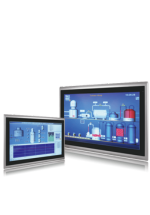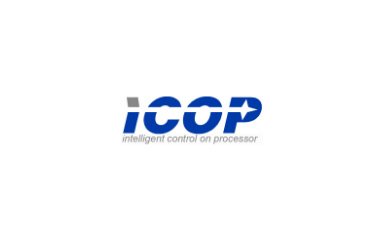 The popularity of the Panel PC format continues unabated onto factory floors, revolutionising production management, increasing productivity through improved efficiency. Making manufacturing smarter by adopting touchscreen human-machine interfaces has been an obvious option for sometime, though increasingly even the most staunch pen-and-paper advocates are left with no choice if they want to stay competitive.
The popularity of the Panel PC format continues unabated onto factory floors, revolutionising production management, increasing productivity through improved efficiency. Making manufacturing smarter by adopting touchscreen human-machine interfaces has been an obvious option for sometime, though increasingly even the most staunch pen-and-paper advocates are left with no choice if they want to stay competitive.
Early in the Panel PC’s tenure, a debate ensued of their correct label, and even today there are still many advocates of the alternative term, HMI. In those early days many system integrators blindly looking to reduce BOM costs even attempted manufacturing their own from separate SBC and LCD components; however the complex art of passive cooling high wattage processors, alongside equally troublesome achievement of the required IP ratings to the uninitiated, meant ‘DIY’ Panel PCs quickly fell by the wayside.
Consequently the turn-key Panel PC reigns supreme to this day, with passively cooled quad Core i7 performance and IP ratings encouraging 80°c pressure washing readily available off-the-shelf from manufacturers’ expert in their field. With no moving parts and operating temperature capable of Arctic to Saharan conditions, there are few locations on earth they can’t be deployed.
Their availability ‘off-the-shelf’ carries obvious advantage of cost reduction, through lack of NRE charges and scale of manufacture, alongside irresistibly short lead times. Attractive as these sound OEMs must always ask themselves that all-important question – Is it EXACTLY what we need? The answer invariably being a resounding “NO”
The paradox with Panel PCs is their relatively high value and comparatively low deployment quantities do not typically go hand in hand with financially viable customisation. Faced with this conundrum, many OEMs demanded ‘open-frame’ varieties of Panel PCs, such that they themselves could functionally and aesthetically retrospectively modify the off-the-shelf product.
Unfortunately not only does the ‘open-frame’ format re-open the IP rating can of worms, the necessity of such additional work to properly fulfil the OEMs needs made the Panel PC itself barely describable as ‘off-the-shelf’ any longer – this approach simply wasn’t viable.
What was needed was a collaboration. That perfect combination came from Aplex Technology, a far eastern Panel PC manufacturer expert in passive cooling and ingress protection techniques with low cost manufacturing facilities; and DSL, a European embedded/industrial PC specialist and electronic design authority.
This union between two industrial stalwarts finally gave OEMs what they crave, bespoke Panel PCs satisfying their EXACT need, functionally and aesthetically – with the price and delivery advantages of their fully off-the-shelf cousins.
The ability to fully customise available I/O, from relatively simple requirements to tweak the number of standard PC interfaces such as serial and USB ports to inclusion of more industry specific I/O, with CANbus, CANopen and DeviceNET as easily recognisable examples – and not just what it is, but select exactly where the connector is located to best suit your individual application’s needs.
The ease of customising these functions is derived from the beauty of our Panel PCs internal design, utilising clever internal expansion ports with which our wide range of off-the-shelf expansion modules allow us to easily satisfy industry standard I/O with almost no effort.
If your I/O requirement is sufficiently unique that satisfying with any preconceived expansion module is but a dream, our expert PCB design engineers can design any proprietary I/O functions onto a new peripheral module, ready to slot into your off-the-shelf Panel PC.
This modular approach to off-the-shelf Panel PC construction additionally enables OEMs to select system configuration attributes, such as RAM and storage capacities, display sizes, touchscreen type, power inputs and operating temperatures, even on a per unit basis if so desired. Flexibility is key.
Whilst functionally doing the job is of unequivocal importance, in our brand conscious world, today’s OEM is equally concerned with aesthetics, the visuals of the product both to ensure the perception of high quality product and to tie rigidly with the visual branding they invest millions in popularising.
Historically those visual changes available related exclusively to changing the bezel material, commonly between standard steel, stainless steel and increasingly today, anodised aluminium. Whilst the ability to select core bezel material remains important, particularly in food and chemical applications – today’s OEM craves selecting their own pantone colour from a rainbow of professionally applied colour schemes and of course, inclusion of their own company logo.
From industry behemoths rolling out their software globally on highly customised, branded DSL Panel PCs, to SME’s rolling out smart manufacturing management across their refurbished factory floor, industrial environments everywhere are benefiting from NRE free customisable Panel PCs, new applications that with substantial and untenable upfront costs would never have been realised.
You may well spot a DSL Panel PC in your own factory, though on reflection, you may not know if you did!




